Most plants don’t bear fruit after the fall, but there are some exceptions. Different kinds of berries thrive during the winter months, providing food for both wildlife and humans.
Winter birds like robins and cedar waxwings rely on these berries to sustain them during the cold. The same goes for humans, who use these fruits to make pies and jams in the warmth of their homes.
It’s important to know how to correctly identify wild winter berries when foraging. You need to ensure that the plant you’re about to eat is safe and good for you.
I’ll identify seven winter berries that are rich in vitamins and ideal for desserts, spreads, juices, and even sauces. Let’s dive in and see what else you can add to your table this winter.
- Related article: Guide to Edible Plants in the Wild
7 Key Takeaways on Edible Winter Berries
- Barberries are rich in vitamin C and berberine. They are best used for jams and teas.
- Rose hips are common in shaded areas. They are rich in vitamin C and ideal for jams, teas, and pies.
- Cranberries are best enjoyed dried or as juices/sauces due to their sweet taste. They are high in vitamin C and antioxidants.
- Chokeberries are tart but nutritious, often made into jams, juices, and wines. They are popular as a “superfood” due to their high antioxidant content.
- American elderberries must be cooked to avoid nausea. They are used in juices, syrups, and wine.
- Rowan berries can be used in jams and wines. They are high in vitamin C and provitamin A, but wild varieties may need careful preparation to avoid toxicity.
- American mountain ash produces bright red-orange berries that should be cooked. The seeds should also be discarded due to cyanide content.
What Are the Most Common Edible Winter Berries?
A berry is a type of fruit that comes from the ovary of a single flower. It is a fleshy fruit. Some berries become more common during winter. This is because they are hardy and can thrive in the cold. They offer a source of nutrition and flavor when other fresh fruits are scarce.
Knowing which winter berries are edible and popular can help you forage better. It can also enhance your recipes with fresh, natural ingredients. Let’s explore some of the most common edible berries available in winter.
1. Barberries (Berberis species)
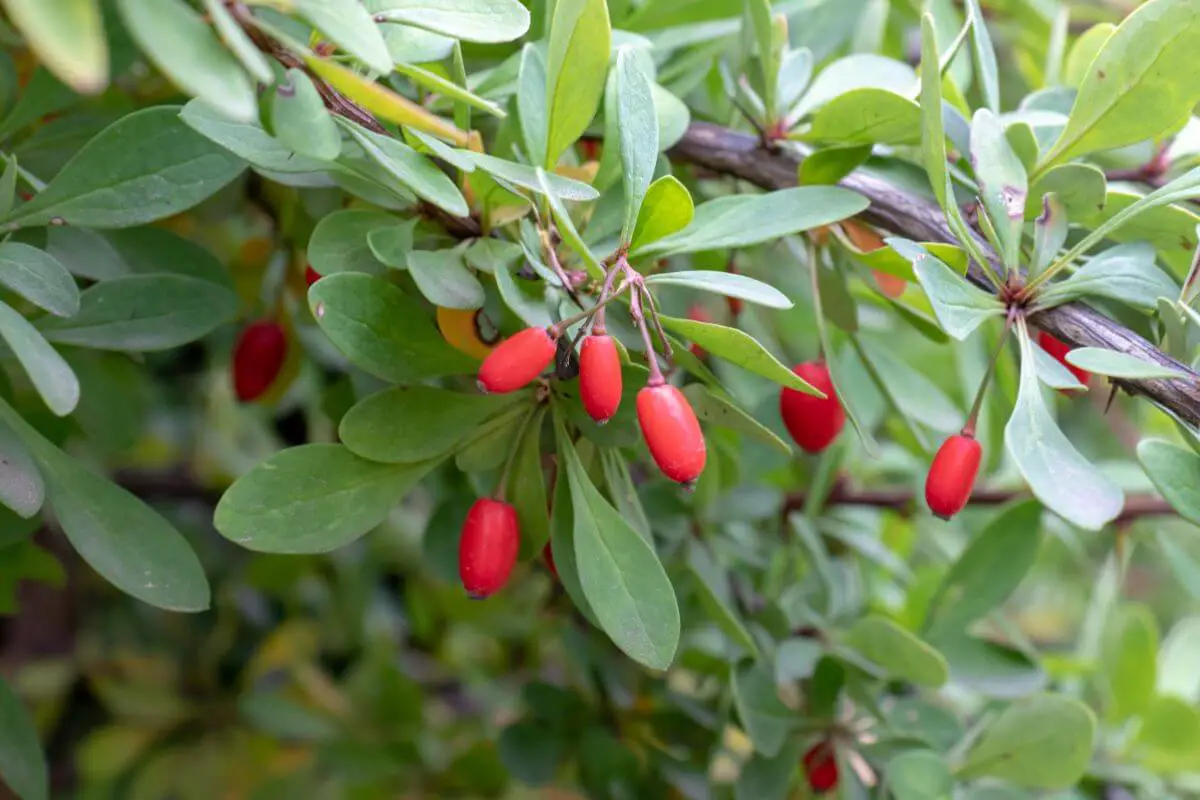
Barberries look similar to wild roses. They are deciduous shrubs that can be found in abandoned fields and forests. They are native to Europe, but several species of barberries grow in the eastern part of North America. They can either be red or black berries.
The most common species is the American barberry (Berberis canadensis). The red fruits of this plant are an essential source of food for many small birds during the winter.
Barberries can be eaten raw, but make sure to avoid the seeds. Their skin and pulp have a sharp, acidic taste and can be refreshing. These fruits are best made into jams because of their rich pectin content. You can also brew them into hot tea during the cold winter months.
They contain high amounts of vitamin C and berberine, a compound beneficial to the immune system. But avoid common barberry berries if you’re pregnant or breastfeeding. Also, avoid them if you have diabetes, low blood pressure, or have small children.
2. Rose Hips (Rosa species)
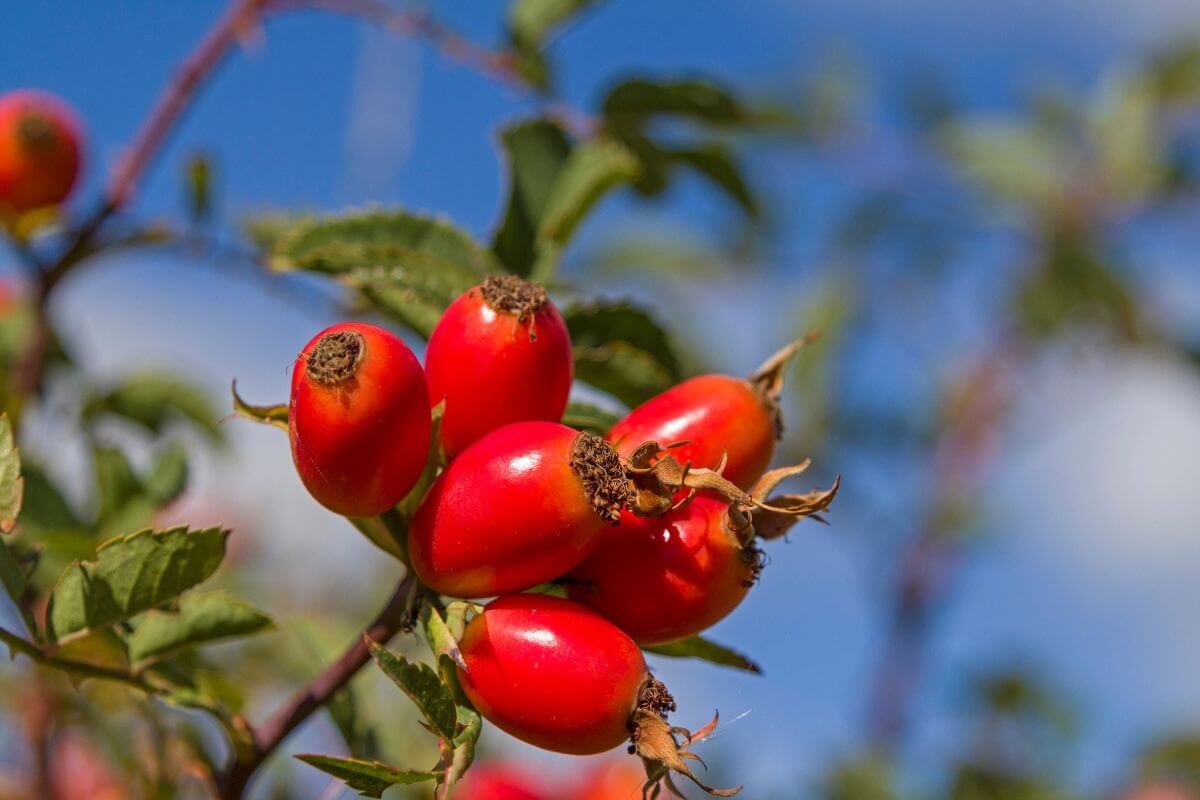
Rose hips are some of the most common shrubs that bear fruits throughout the winter. They are common in shaded areas. In the United States, many wild roses and cultivated varieties exist.
All Rosehip species are edible, but the wild ones are typically safer to eat because they’re unlikely to contain pesticides. Birds feed on rose hips and their seeds, and dogs also enjoy their taste.
Rose hips are red and contain hairs that are best discarded before eating. They are traditionally used to make jams, teas, syrups, bread, and pies. You can even try to make a berry shortcake.
They are rich in vitamin C and contain good amounts of beta-carotene and malic acid. Here’s a video explaining how to eat Rose hips:
3. Cranberries (Vaccinium macrocarpon)
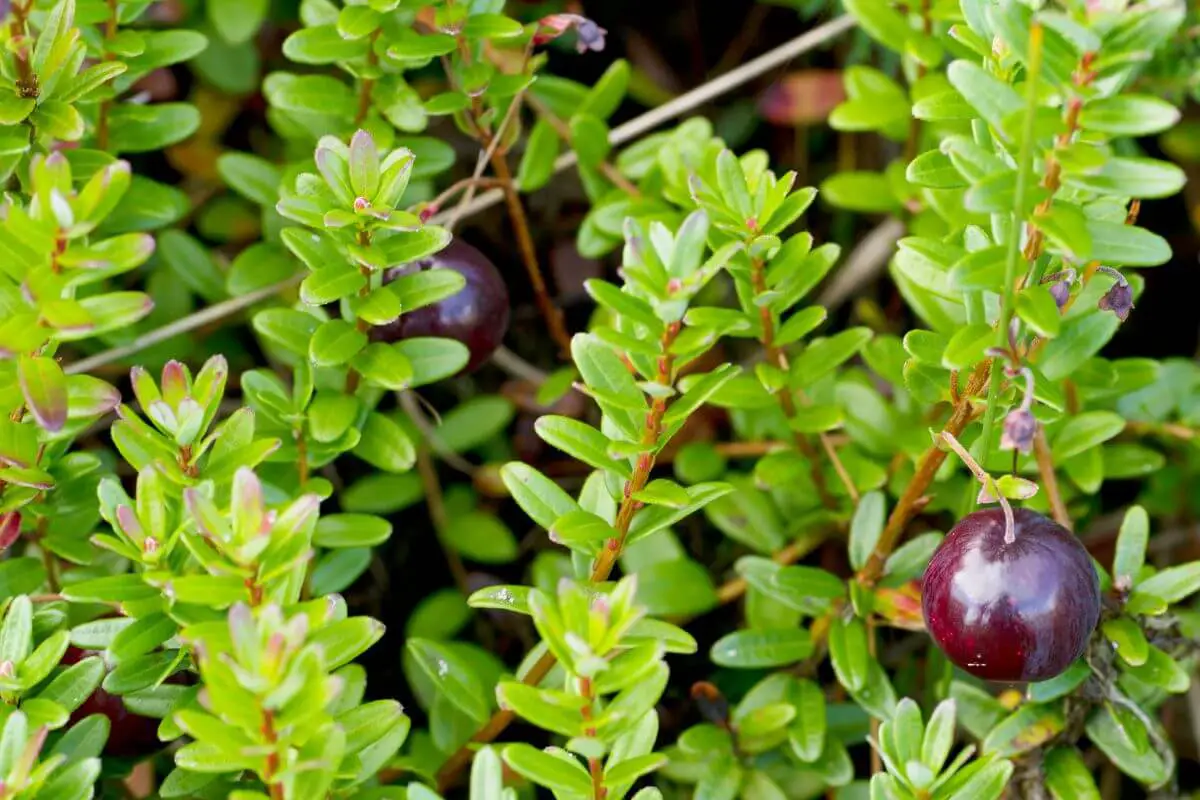
Cranberries are common in northern America, especially in the colder states. They prefer acidic, wet soil and can be found growing near lakes, bogs, and swamps.
The fruits usually persist from September to January. Cranberries are eaten by birds and small mammals, such as rabbits and squirrels.
Cranberries can be eaten fresh, but they are often bitter, sour, and hard. You’ll likely enjoy them more when they’re dried or made into sauce or juices.
They have good amounts of vitamin C, manganese, and antioxidants. When fresh, these aren’t normally considered sweet berries. But in dried form, they are sweeter and will lose some vitamin C content.
4. Chokeberries (Aronia species)
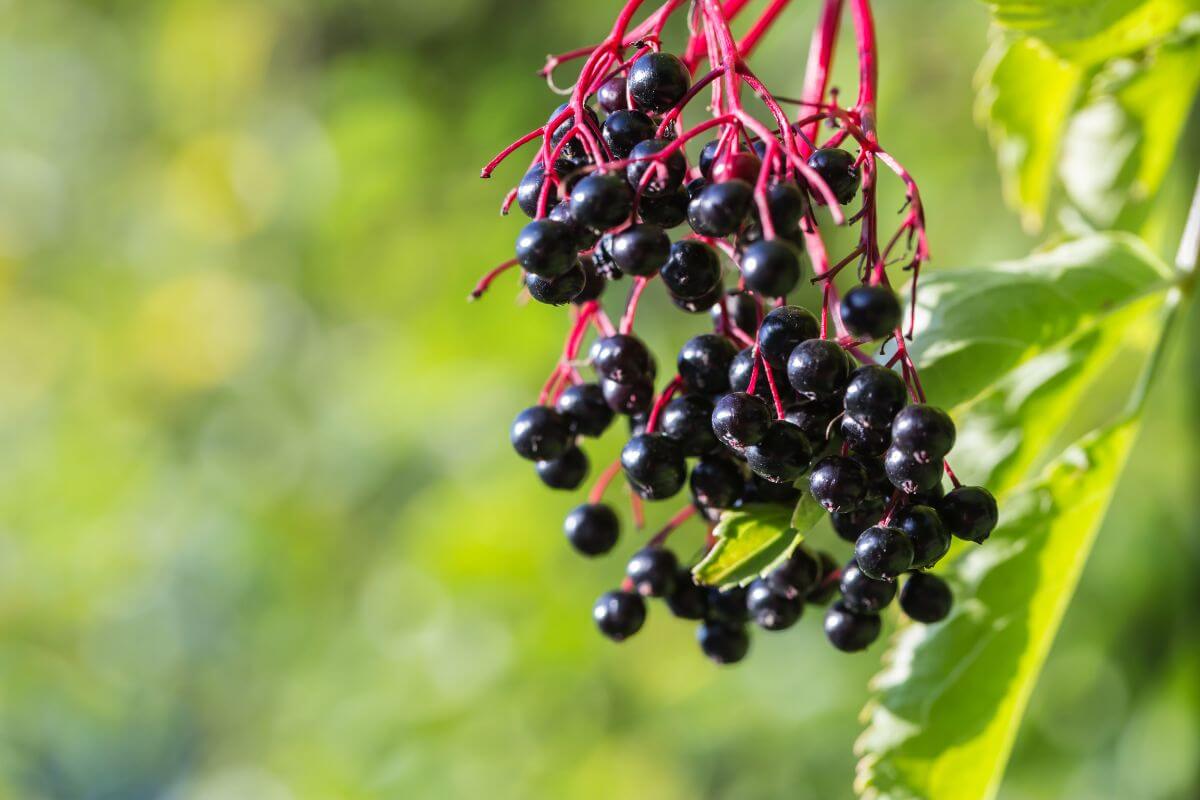
Chokeberries occur in wet areas in the eastern part of the United States and Canada. The two main species are Aronia melanocarpa, which has black fruits, and Aronia arbutifolia, which has red ones.
Chokeberries are essential for wildlife. They provide food for many birds, mammals, and rodents. They also offer cover and nesting habitat for birds.
Chokeberries are tarty and can be eaten fresh or made into jams, juices, wine, and tea. If you can find them, always prefer the red ones, which are tastier and juicier. Their excellent antioxidant content makes them popular as a “superfood.”
5. American Elderberry (Sambucus canadensis)
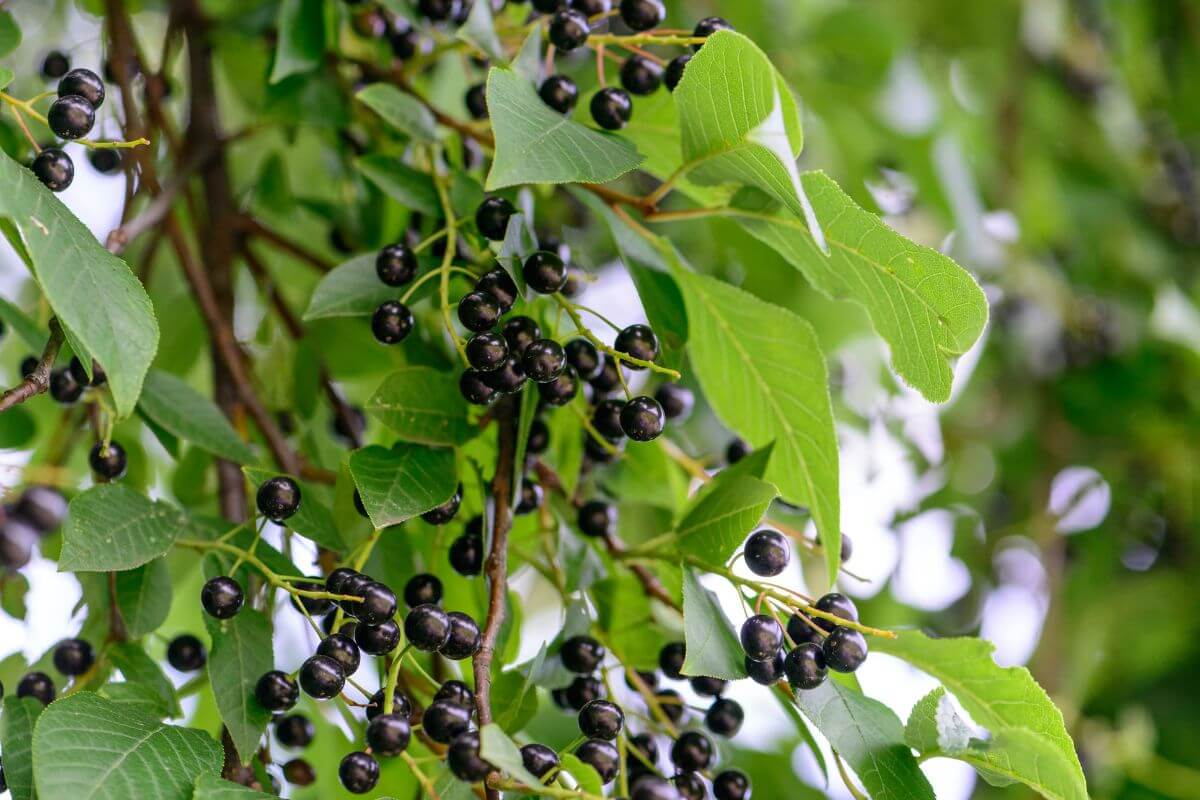
Elderberries are one of the common wild berries that you can eat. They grow in eastern North America and thrive in moist, shady areas. They can be found in forests, old fields, and along roads. They are very small and grow in clusters.
They are food for moose, deer, and elk. They eat the leaves and stems. They are also important for birds, squirrels, and bears. Elderberries will ripen and mature in late summer and are highly sought after by the animals.
American elderberries have a tart and tangy taste when eaten raw, but eating them raw isn’t recommended as it can cause nausea. It’s best to eat them cooked. Cooking deactivates the alkaloid compounds in the pulp that cause this effect. They are commonly used for juices, jams, syrups, and wine.
Elderberries are a healthy addition to your diet. They are rich in vitamins C and B6 and antioxidants.
6. Rowan Berries (Sorbus aucuparia)
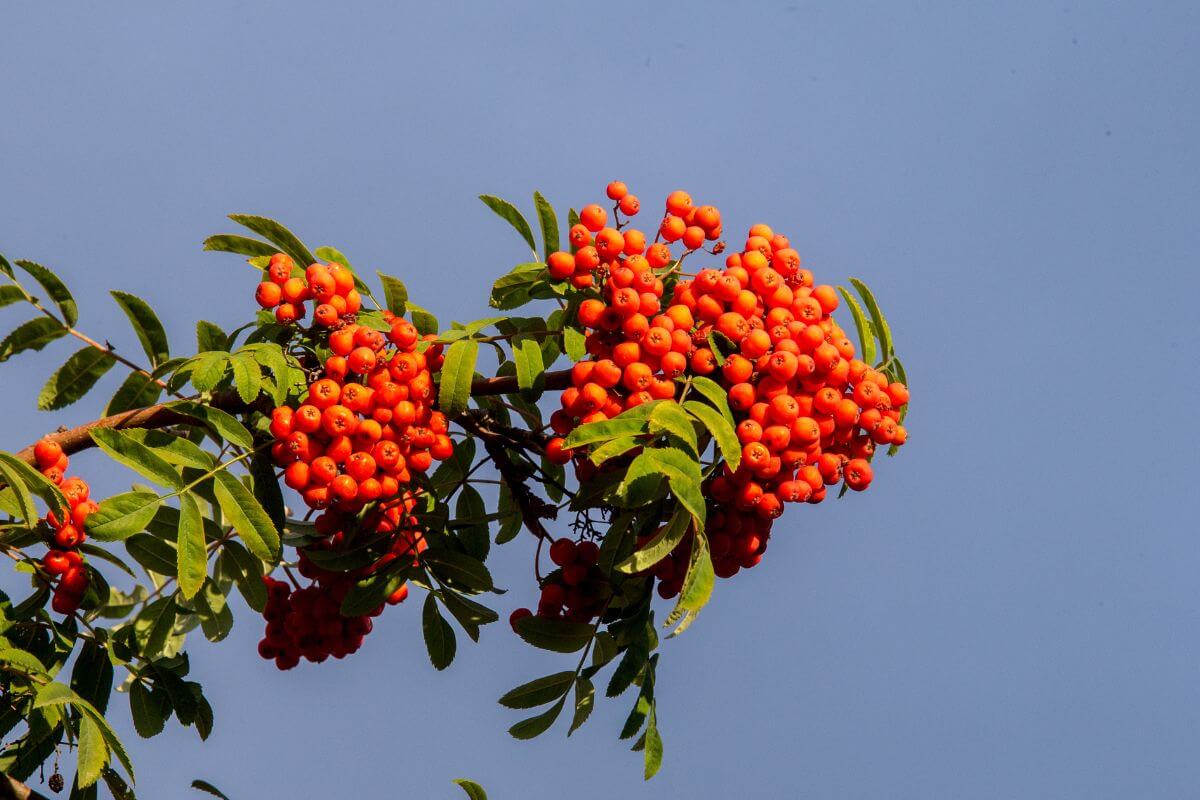
Rowan, also known as European mountain ash, comes from Europe and Asia. It’s often planted in northern North America as a decorative tree. It’s also found in some parts of Canada and the northern U.S. The small, deciduous tree grows in cool mountain climates and doesn’t like hot and humid summers.
This plant is mainly grown for its green leaves and clusters of fall fruit. It thrives in moist, acidic, well-drained soils in full sun. Caterpillars of the apple fruit moth feed on rowan berries and various birds such as mistle thrush, redstart, redwing, song thrush, blackcap, fieldfare, and waxwing.
Ripe rowan berries can be eaten, and you may especially enjoy the sweeter varieties. However, it’s important to avoid picking berries from random rowan trees. The wild berries on these trees may contain parasorbic acid, which can cause kidney damage or stomach problems like diarrhea when eaten in large amounts.
Rowan berries have been used to make fruit wines and liqueurs like rowan berry gin for many years. They can also be candied, dried, or raw in sweet dishes such as compotes, purees, baked goods, and mueslis. Rowan berry recipes often include rowan berry jam, usually mixed with sweeter fruits.
Rowan berries are high in vitamin C and provitamin A. They also have sugar and sorbitol, a fructose that is beneficial for people with diabetes.
7. American Mountain Ash (Sorbus Americana)
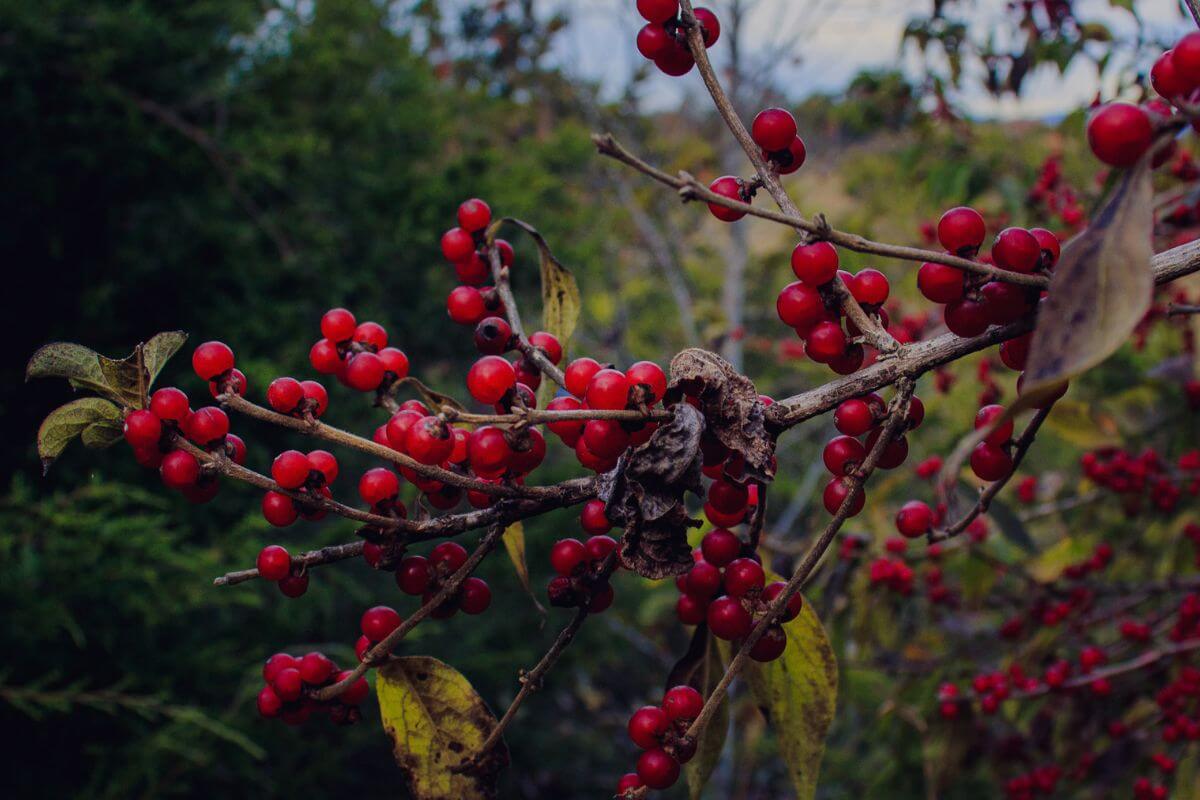
The mountain ash grows as a tree or shrub in northeastern North America. It thrives near forests and on rocky mountain grounds. It prefers full sun and moist, rich soils.
In the fall, mountain ash produces bright red-orange berries that are beautiful but sometimes dangerous to humans. The seeds of the berries contain cyanide compounds, which can cause death. Nevertheless, it is possible to eat them after cooking, taking care of discarding the seeds.
Mountain ash berries should be picked after several frosts because freezing greatly improves their taste. These fruits are best used for making jams and sauces.
Edible Winter Berries Final Thoughts
Winter berries have a lot of benefits for humans, animals, and our environment. Not only do they provide nutrition, but they also help clean up the air we breathe and protect wildlife from predators.
During the cold and rainy months, these gorgeous winter berries in the garden provide a colorful treat for gardeners and a vital food source for hungry birds. Winter berries are high in sugar and fat for birds. This helps them endure freezing temperatures and sustain them during migration.
Bring variety to your winter food options with these edible winter berries. Not only will they improve your culinary experience, but bring much-needed warmth with their unique flavors and versatility.
Edible Winter Berries FAQs
1. What Are the Best Winter Berries to Eat?
Cranberries, pomegranates, and persimmons are some of the best winter berries to eat. These berries are delicious and rich in vitamins and antioxidants, making them a healthy choice during the winter season.
2. Are Winter Berries Good for You?
Winter berries are good for you. They are rich in vitamins, antioxidants, and fiber, which can boost your immune system and improve overall health.
3. What Are Winter Frost Berries?
Winter frost berries typically refer to certain types, such as holly or snowberries, that appear in winter and often endure frost. These berries are usually more ornamental and not meant for consumption.
4. Are Christmas Berries Edible?
Christmas berries, such as those from the holly plant, are generally not edible and can be toxic if ingested. They are primarily used for decorative purposes during the holiday season.
5. Can I Eat Frozen Berries Every Day?
You can eat frozen berries every day. They are nutritious, rich in vitamins and antioxidants, and retain most nutritional value when frozen.
Check out our articles on other berries and plants that are edible:

